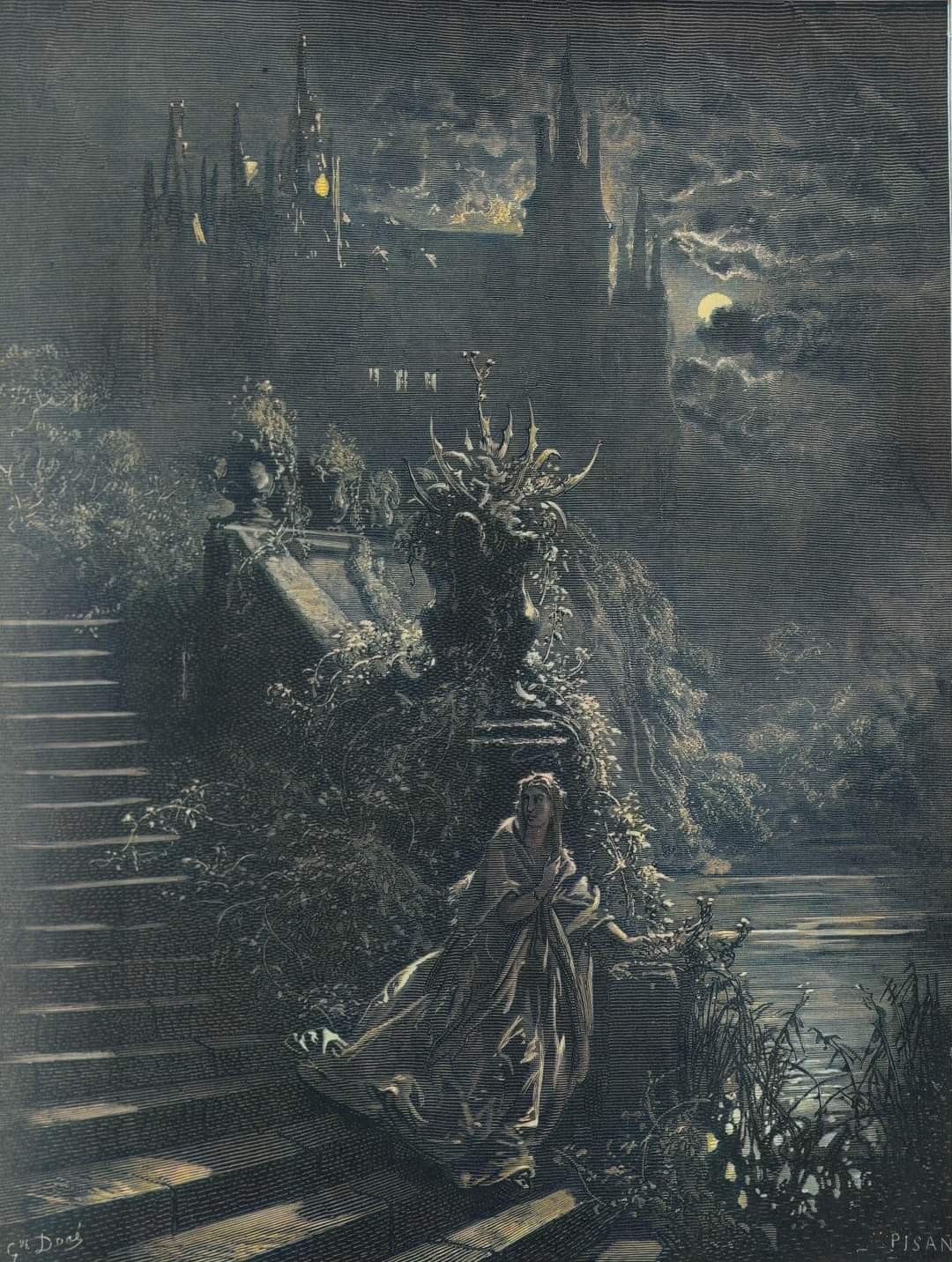The illustration by Gustave Doré for Charles Perrault's "Peau d’Âne" is a rich canvas of visual and thematic elements, steeped in the narrative's underlying complexities.
The illustration by Gustave Doré for Charles Perrault's "Peau d’Âne" is a rich canvas of visual and thematic elements, steeped in the narrative's underlying complexities. The image is cloaked in a nighttime ambiance, where the juxtaposition of light and shadow plays a pivotal role in conveying mood and depth. The central figure, presumably the story's protagonist, is caught in a moment of escape, her posture and expression embodying a mix of determination and trepidation.
Doré's masterful use of light not only guides the viewer's eye but also symbolizes the glimmer of hope in the darkness, a recurring theme in Perrault's tales where characters often face dire circumstances with courage and resourcefulness. The stairway serves as a literal and metaphorical pathway, suggesting a transition from one state of being to another, from desperation to salvation, or from innocence to enlightenment.
The presence of the castle in the background, partially obscured by the clouds and moonlight, adds layers of symbolism. Castles are often seen as fortresses of safety and sovereignty but here, they may also represent the oppressive conditions from which the young woman is fleeing. This duality reflects the complexity of the human condition, where places of refuge can also be prisons of spirit.
The natural elements in the scene—the rugged trees and overgrown foliage—are reminiscent of the untamed aspects of the psyche, evoking the Romantic era's fascination with the sublime and the uncontrollable forces of nature. These elements are in stark contrast with the manicured garden near the staircase, suggesting a tension between the wild and the cultivated, the free and the constrained.
Peau d’Âne itself is a tale of resilience against adversity, and Doré's illustration encapsulates this beautifully. The narrative is one of transformation, where the protagonist must don the skin of a donkey to protect herself, disguising her royal heritage and beauty to escape a forced and incestuous marriage propositioned by her father. The themes of disguise and identity are echoed in the darkness of the scene, where things are not what they seem, and where light reveals truth.
In this image, we are reminded of the power of fairy tales to reflect our deepest fears and our highest hopes. Doré’s visual representation of "Peau d’Âne" invites us to contemplate the darkness we all must navigate and the light of hope that guides us through it. It is a testament to the enduring power of story and image to convey the complexities of the human journey.


